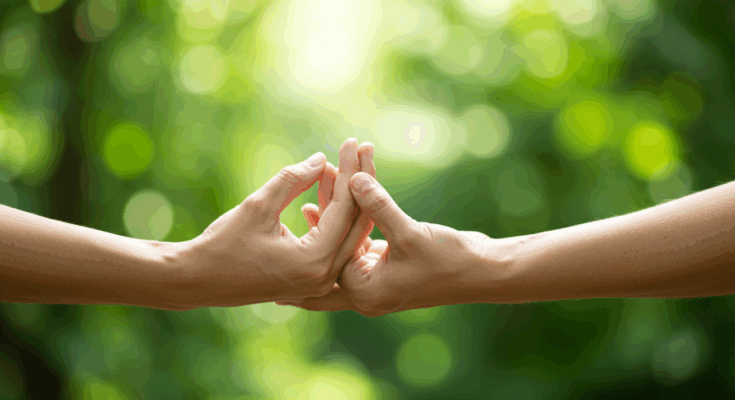In the hustle of 2025, where notifications ping endlessly and work-life boundaries blur, finding inner peace feels like a distant dream. Yet, mindfulness—a practice rooted in ancient traditions but backed by cutting-edge science—offers a practical path to reclaiming calm amid chaos. As a busy professional who’s juggled deadlines and family, I’ve discovered that mastering mindfulness isn’t about escaping reality; it’s about engaging with it fully, without judgment. Recent research, including a 2025 study from Mount Sinai, shows that regular mindfulness can reshape deep brain areas tied to memory and emotions, fostering lasting serenity. This guide demystifies the practice, providing step-by-step techniques, real-world applications, and solutions to hurdles. Whether you’re a beginner wondering “Can mindfulness really quiet my racing mind?” or seeking deeper insights, you’ll gain actionable tools to cultivate peace that radiates through your days.
Understanding Mindfulness: The Foundation of Inner Peace
Mindfulness is the art of being present, observing thoughts, feelings, and sensations without getting swept away. It’s not about emptying your mind—that’s a myth—but gently redirecting attention to the now. Originating from Buddhist practices, it’s now secularized and studied extensively for modern life.
Key Benefits Backed by Science
The rewards extend beyond fleeting calm. A Washington Post analysis highlights mindfulness’s role in treating anxiety and depression, while boosting productivity. For inner peace, it reduces stress by lowering cortisol, as noted in a 2025 Therapeutic Partners piece, helping you respond rather than react to life’s curveballs. Physically, it lowers blood pressure and eases chronic pain, per randomized trials. Emotionally, it enhances self-awareness and compassion, leading to better relationships. A March 2025 roundup from Mindful Leader reveals long-term practitioners exhibit brain changes that sustain restful states.
To visualize: Regular practice can cut anxiety by 20-30%, fostering resilience against daily stressors. If you’re skeptical, start small—evidence shows even brief sessions yield benefits.
Getting Started: Simple Techniques for Beginners
Diving in doesn’t require hours or a mountaintop retreat. Begin with these foundational practices, drawn from expert sources like Mayo Clinic.
Breath Awareness: Your Anchor to the Present
This core technique calms the nervous system instantly. Sit comfortably, close your eyes, and focus on your breath’s rhythm—in through the nose, out through the mouth. When thoughts wander (they will), gently return to the breath. Start with 2-5 minutes daily, as suggested in beginner guides. Pro tip: Use a timer app to build habit without pressure.
Body Scan: Releasing Hidden Tension
Lie down or sit, and mentally scan from toes to head, noting sensations without judgment. Tense and release muscles if tight. This 5-10 minute practice, from Positive Psychology resources, uncovers stress pockets, promoting physical relaxation that mirrors inner peace.
Mindful Walking: Peace in Motion
For active types, walk slowly, noticing each step—the ground’s feel, air’s breeze. Coordinate breath with strides: Inhale for four steps, exhale for four. Ideal for 10-15 minutes outdoors, it integrates mindfulness into routines, as per Mindful.org.
Question answered: “How do I fit this in?” These take minutes and can piggyback on habits like commuting.
Advancing Your Practice: Deeper Paths to Serenity
Once basics click, layer in complexity for profound peace.
Loving-Kindness Meditation (Metta)
Cultivate compassion: Repeat phrases like “May I be safe, happy, healthy” for yourself, then others. A 10-minute session boosts empathy and reduces self-criticism. Extend to challenging people for true inner harmony.
Mindful Journaling: Reflect and Release
Write thoughts without editing, then observe patterns. End with gratitudes. This 15-minute ritual, from Reddit insights, clarifies emotions, fostering acceptance.
Guided Imagery: Visualizing Calm
Imagine a peaceful scene—waves lapping, forest hush. Pair with breath for 5-10 minutes. Mayo Clinic endorses this for anxiety relief.
Track progress: Journal weekly mood shifts to see peace unfolding.
Integrating Mindfulness into Everyday Life
Mastery means weaving it seamlessly. During meals, savor each bite—noting textures and flavors—to curb overeating and enhance joy. In conversations, listen fully without planning replies, deepening connections. At work, take “mindful moments”—pause before emails to breathe, reducing reactivity.
Create a routine: Morning breathwork (5 min), midday walk (10 min), evening journaling (15 min). A 2025 Medium article suggests this builds resilience. For families, share practices like group breathing to model peace.
Overcoming Common Challenges: Staying on Track
Mindfulness isn’t effortless—hurdles arise, but solutions exist.
Wandering Mind: The Universal Struggle
Thoughts intrude? Label them (“planning,” “worrying”) and return to breath. MI-Psych notes this normalizes the process. Solution: Shorten sessions initially.
Restlessness or Discomfort
Can’t sit still? Start with walking or lying down. Reddit users recommend gentle stretches first. For emotional aversion, Tiny Buddha advises viewing it as growth opportunity.
Time Constraints: “I’m Too Busy”
Even 1-2 minutes count. Chicago Counseling suggests micro-practices like mindful sipping. Set reminders; consistency trumps duration.
Doubt or Boredom
Results lag? Track small wins like better sleep. PMC research links rumination as a barrier—counter with patience.
These address “Why can’t I stick with it?”—compassion is key.
Mastering mindfulness transforms turmoil into tranquility. Commit today; your peaceful self awaits.
FAQ
What if my mind won’t stop racing during practice?
It’s common—gently redirect without self-judgment. Start with guided apps for structure.
How long until I feel inner peace?
Benefits emerge in weeks, but consistency matters. Studies show 8 weeks for notable changes.
Can mindfulness help with physical pain?
Yes—it reduces perception of pain and inflammation.
Is it religious?
No—it’s secular, adaptable to any belief system.
What if I fall asleep during meditation?
That’s okay; it signals needed rest. Try upright postures or earlier times.


![Mindfulness for Recovery [INFOGRAPHIC] - Rehab Recovery](https://www.rehab-recovery.co.uk/wp-content/uploads/2018/03/mindfulness_infographic.jpg)




